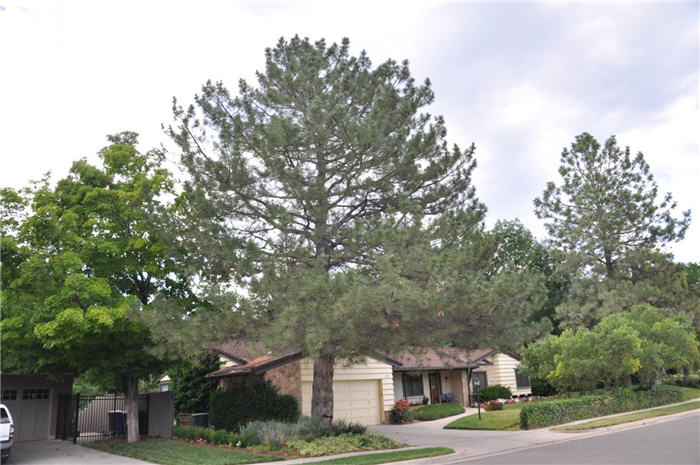| Botanical Name: Pinus nigra | |
| Common Name: Austrian Pine |

-
Anatomy
-
Culture
-
Design
Plant Type
Tree, Conifer
Height Range
40-60'
Flower Color
n/a
Flower Season
n/a
Leaf Color
Dark Green
Bark Color
Brown, Grey
Fruit Color
Brown, Yellow
Fruit Season
Fall, Persistent
Sun
Full
Water
Medium
Growth Rate
Fast
Soil Type
Clay, Loam, Rocky
Soil Condition
Average, Rich, Poor, Well-drained
Soil pH
Neutral, Basic
Adverse Factors
n/a
Design Styles
Formal, Meadow, Mediterranean, Ranch, Spanish, Woodland
Accenting Features
Specimen
Seasonal Interest
Winter
Location Uses
Background
Special Uses
Screen, Mass Planting, Wind Break
Attracts Wildlife
Birds, Wildlife
Information by: Stephanie Duer
Photographer:
Photographer:
-
Description
-
Notes
Austrian pine is a handsome evergreen tree with densely branched and pyramidal when young; becoming more umbrella shaped as it ages. Needles are long and dark green. Pine cones are shiny yellow-brown, and about 3 inches long. Bark is grey-brown, thick, irregular, with deep furrows. Excellent for windbreaks are as specimens. Fast growing to 40 to 50 feet tall, and about 15 to 25 feet wide. This is a big pine, so provide ample space. This tree has many varieties selected for specific traits, such as size and columnar habit.
Readily adaptible to most soils, and is fairly tolerant of heat, air pollution, and other urban conditions. Somewhat salt tolerant. Grow in full sun. Not really drought tolerant, but not water-hoggish, either. It is never a good idea to prune or shear pines; if you do need to control the width, breaking off the candles in the spring does the least damage; see the Guide.